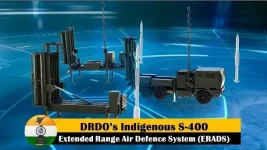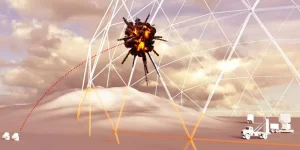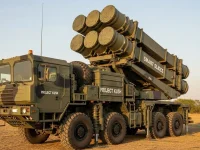- Views: 1K
- Replies: 1
India's Defence Research and Development Organisation (DRDO) is making significant strides in its indigenous long-range air defence system, Project Kusha, with its M3 interceptor missile.
According to design specifications, the M3 variant combines a formidable 400 km engagement range with a remarkably low weight of 1,673 kg, enhancing its mobility and rapid deployment capabilities.
This development positions the indigenous missile as a lighter, more agile alternative to the Russian 40N6E missile, which is used by the S-400 Triumf system and weighs 1,893 kg. The M3, while longer at 9.472 meters, features a slim 500 mm diameter, allowing it to fit into standard 1-meter launch tubes.
Project Kusha, valued at Rs 21,700 crore, is being developed as a tiered defence system to protect against a wide range of aerial threats, from tactical aircraft to hypersonic and ballistic missiles.
The project includes three interceptor variants: the M1 (150 km range), M2 (250 km range), and the M3 (400 km range). The system is being developed for the Indian Air Force and the Indian Army and is reportedly on track for user trials to begin in 2027.
The M3's reduced weight, more than 200 kg lighter than its Russian counterpart, is a key tactical advantage. It lessens the logistical burden and allows transport vehicles to carry a larger number of interceptors per convoy.
This efficiency is achieved through the use of advanced materials like carbon-carbon composites and Gallium Nitride (GaN) electronics, without sacrificing the missile's high-speed "sprint" capability of Mach 5.5.
The missile's design is optimised for forward deployment in challenging terrain, such as along the Line of Actual Control (LAC). Its slimmer profile and a thrust-vectoring nozzle enable denser packing on mobile launchers, where space is limited.
Furthermore, the system is reportedly designed with modularity in mind, allowing for swappable seekers to potentially engage different target types.
Data from Hyderabad’s Research Centre Imarat (RCI) has indicated a high degree of effectiveness, with the M3 achieving a 95% hit probability in simulations against ballistic missile trajectories.
The system will be produced by Bharat Electronics Limited (BEL), with a reported goal of 500+ units by 2032.
This indigenous production is expected to significantly reduce costs to an estimated Rs 40-50 crore per missile, compared to the Rs 100 crore for an imported S-400 interceptor.
Once operational, the Project Kusha system will be integrated with India's indigenous Uttam AESA radars, creating a networked and resilient national air defence shield.



